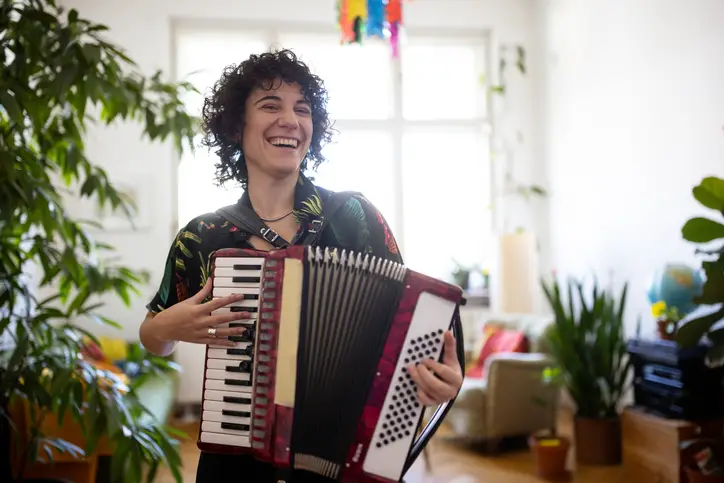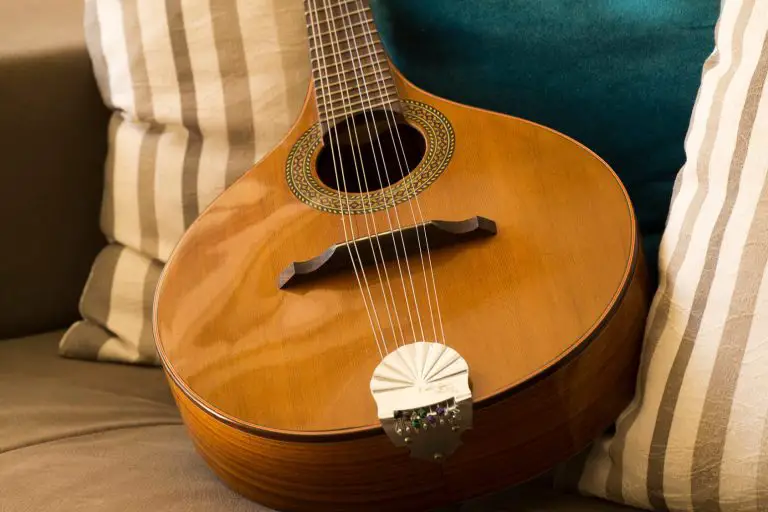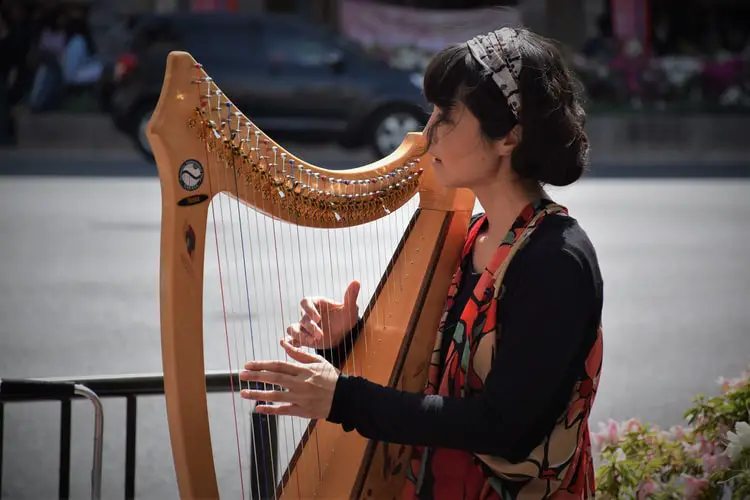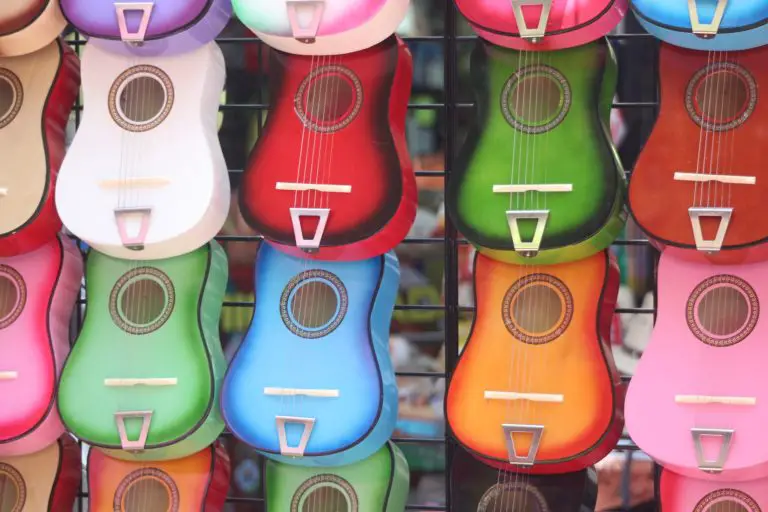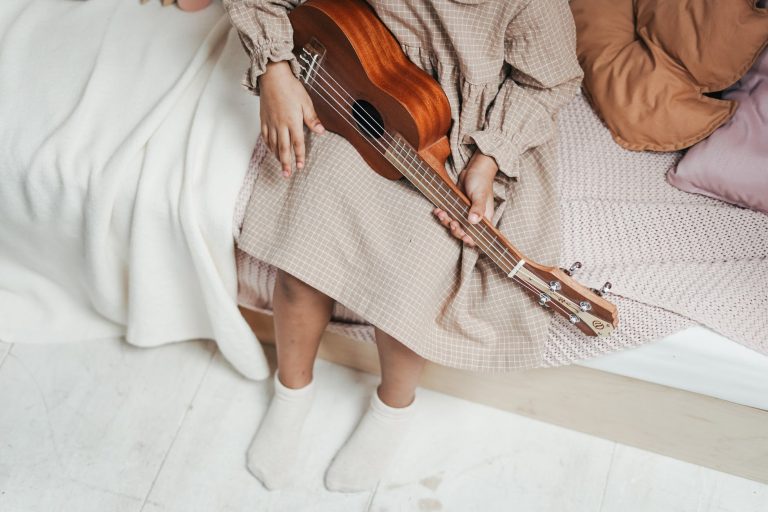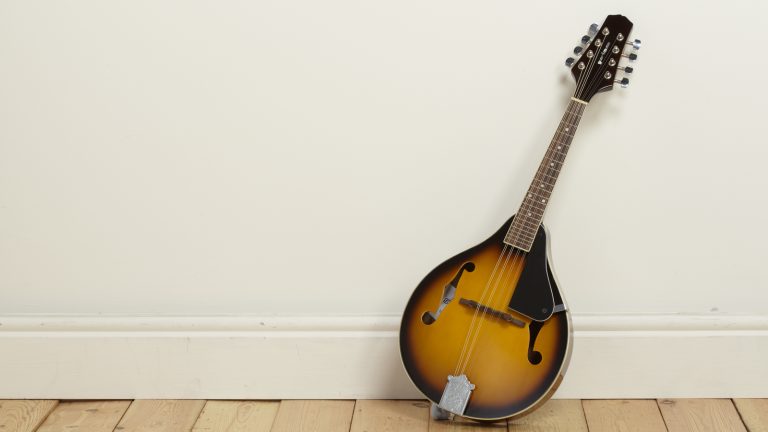What Is The Best Accordion for Beginners? – Easy-to-Play Models for New Musicians
Folkstrings.com is reader-supported. When you buy through links on our site, we may earn a small commission.
When venturing into the world of accordions, finding the best instrument for a beginner is crucial.
Just like any other musical journey, the start is always about grasping the basics with an instrument that complements the learning phase.
My beginner friends often ask me for advice, and I guide them to seek an accordion that is not overwhelming to understand or play.
The sheer variety of accordions on the market today can be daunting, but some brands and models stand out for their beginner-friendliness, offering a balance of quality, playability, and affordability.
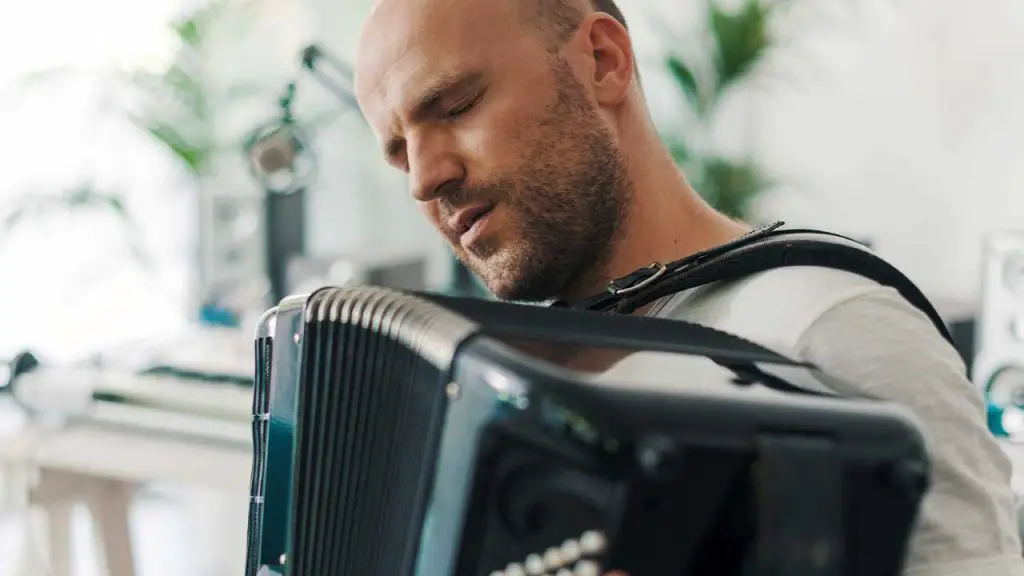
As a beginner, it’s essential to know that accordions come in different types, each with its unique features and learning curves.
BTW: Be sure to check out our Top 3 Picks of Accordion Sheet Music Books for Beginners. Click here.
When I first started, I found myself sifting through various types, from piano to button accordions, and each type serves different musical styles and player preferences.
Alongside the type, the size, weight, and number of bass buttons are factors that can affect a beginner’s comfort and learning pace.
Also, there are quite a few accessories and maintenance considerations to keep in mind to ensure longevity and consistent performance of the instrument.
While the learning resources have blossomed in recent years, from books to online tutorials, it’s also important to choose an accordion that matches the educational resources available to you.
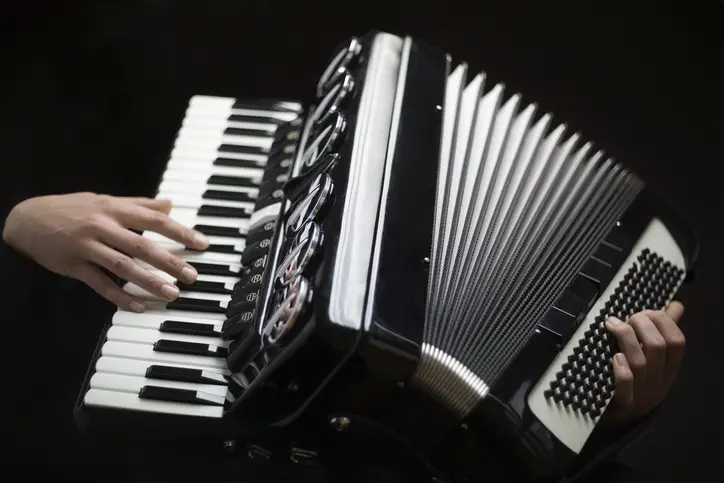
Key Points…
- Choosing an accordion with beginner-friendly features is essential for a positive learning experience.
- The type of accordion selected should match the individual’s musical style and comfort needs.
- Maintenance and accessible learning resources are important for ongoing skill development.
Table of Contents
Best Beginner Accordion Brands and Models
When I started my musical journey on the accordion, I found that investing in a reliable and beginner-friendly model was key.
Below are some of the top brands and models I recommend for new players that combine quality with ease of use.
Hohner Accordions
My first pick is Hohner, a brand with a longstanding reputation for quality. New players might want to look at the Hohner Compadre or the Hohner Panther G/C/F 3-Row Diatonic Accordion. Both models are durable and offer a pleasant playing experience:
- Hohner Compadre: It’s compact, colorful, and has a comfortable strap, making it ideal for beginners.
- Hohner Panther G/C/F 3-Row Diatonic Accordion: This is a versatile and affordable option for those looking to play traditional genres like conjunto and norteño.
For those interested in piano accordions, the Hohner Accordions 1303-RED 12 Bass Entry Level Piano Accordion is a solid choice with its 12 bass buttons and 26 keys, which is more than enough to learn and play a wide range of songs.
Rossetti Accordions
Another brand I’ve had a great experience with is Rossetti. Their 31-Key Accordion is both accessible for beginners and built well enough to carry you through intermediate stages:
- Rossetti 31-Key Accordion: Offers a good balance between range and size, which is perfect if you’re just starting out but want to avoid upgrading too soon.
Other Popular Brands for Beginners
There are several other brands that cater well to beginners. Two examples to consider are the Roland FR-1X Piano-Type V-Accordion and the Fever F3112 MX Button Accordion:
- Roland FR-1X: This is a digital accordion, featuring a range of sounds and lightweight design. It’s perfect for beginners who want to experiment with different genres.
- Fever F3112 MX: A good fit if you’re looking for a more traditional button accordion at an entry-level price point.
And for those interested in a diatonic model, the Rizatti Bronco RB31GW Diatonic Accordion stands out for its robustness and clear sound, making it very rewarding for first-time players to learn on.
Key Features You Need to Consider When Choosing an Accordion
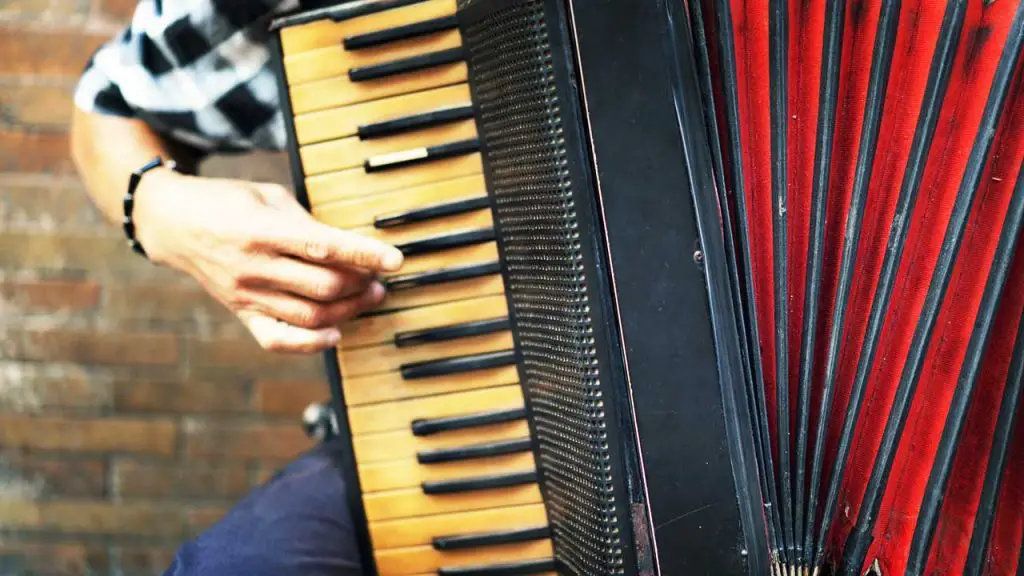
When I look for an accordion, especially as a beginner, there are several critical features I make sure to examine to ensure that my choice suits my abilities and musical goals.
Size and Weight
I find that the accordion’s size and weight are paramount because they directly affect my comfort and playability.
As a beginner, I lean towards a more manageable size that is easier to handle without causing strain over long practice sessions.
I appreciate a lightweight model, often made of materials such as plastic in the body instead of wood, as this helps me maintain better posture and stamina while I’m learning.
Number of Keys and Buttons
The number of keys and buttons on an accordion is a significant factor that dictates its complexity and range.
For starters, I recommend an accordion with fewer keys (around 22 to 26 piano keys) on the right-hand keyboard for melody, as it simplifies the learning curve.
On the left-hand bass side, a beginner friendly accordion may have anywhere from 12 to 72 bass buttons, which I think is sufficient for a solid foundation without overwhelming me with too many choices.
Reeds and Sound Quality
Reeds determine an accordion’s sound quality. Higher quality reeds produce a richer and more resonant sound, which is something I always listen for.
I personally look for an accordion with good quality reeds that offer clear and stable tones even at a beginner’s level.
This usually means that the accordion features two to three reed ranks, which provides a nice variety of tones without being overly complicated.
Understanding Accordion Types
When you’re starting out on accordion, one of the first things you’ll need to know is that there are several different types of accordions. Each has its own unique characteristics and sound, so let’s explore what makes them distinct.
Piano vs Button Accordions
Piano Accordions
- Keys: Similar to a piano, with a keyboard for the right hand.
- Range: Offers a wide range of notes, typically suited for classical and jazz music.
- Layout: Uniform, making it intuitive for those already familiar with the piano.
Button Accordions
- Buttons: Both hands use buttons for notes and chords.
- Types: Can be either diatonic or chromatic.
- Advantage: Often more compact and lighter than piano accordions.
Diatonic and Chromatic Accordions
Diatonic Accordions
- Notes: Produce a different note when you push or pull the bellows (bisonoric).
- Usage: Common in folk music due to their rich and distinct sound.
- Layout: The buttons are arranged by key, which may limit the versatility but also simplifies playing in those keys.
Chromatic Accordions
- Notes: Same note on push and pull (unisonoric), like a piano accordion.
- Versatility: Enables playing in any key with the same fingering patterns.
- Complexity: More complicated than diatonic but favored for its musical flexibility.
Unique Accordions and Their Sounds
Concertina Accordions
- Shape: Compact with hexagonal or octagonal sides.
- Sound: Characteristically bright and punchy, often used in maritime and traditional folk tunes.
Other Unique Types
- Some accordions are designed for specific genres or styles, and the sound can vary widely based on the internal construction and the manner of tone generation.
- Exploring these sounds can help you find the accordion that best suits your musical taste and playing style.
Accessories and Maintenance
You will quickly learn as I did how essential it is to have the right accessories for protection and upkeep of your accordion. Not only will these items made my life easier, but they also ensure my accordion stays in top condition.
Essential Accordion Accessories
Gig Bag or Padded Case: A durable gig bag or padded case is crucial for protecting your accordion from dust, moisture, and accidental bumps. I prefer a case with thick padding for extra cushioning during transport.
- Shoulder Straps: Comfortable shoulder straps are a must-have. They should be adjustable and padded to relieve pressure from your shoulders.
- Cleaning Cloth: I always keep a soft cleaning cloth handy to wipe down my accordion after use. This keeps the instrument free of dust and grime.
Here’s a simple list of accessories I suggest for every beginner:
- Gig bag/padded case for durability and protection
- Adjustable, padded shoulder straps
- A lint-free cleaning cloth
Care and Maintenance Tips
To keep my accordion in the best possible shape, I follow a set of maintenance routines:
- Regular Cleaning: I gently clean the exterior with a soft, dry cloth and use a slightly damp cloth for stubborn spots.
- Proper Storage: I ensure that my accordion is stored in a cool, dry place and inside its case when not in use to prevent any accidental damage.
- Check for Wear: Regularly checking the bellows and straps for signs of wear and tear can prevent minor issues from becoming major problems.
By following these steps, maintaining my accordion becomes an easy part of my routine.
Learning to Play the Accordion
I found that a structured approach to learning and regular practice were pivotal in my getting the hang of the accordion. Embracing the right learning materials tailored for beginners can greatly enhance the learning process.
Beginner Lessons and Practice
To really get a hold of the accordion, I committed to consistent practice, setting aside time daily for it.
It’s critical to start with the basics:
- Familiarize with the accordion parts
- Understand the arrangement of buttons and keys
- Learn simple scales and chords
- Graduate to playing simple songs
A methodical practice routine helped me gain confidence and proficiency bit by bit.
For hands-on guidance, I explored local music teachers or even accordion clubs, which provide practical advice and feedback.
Accordion Method Books and Tutorials
Getting a method book guided my journey from absolute novice to a capable player. The “Hohner Diatonic Method Book” was a lifesaver, designed specifically for beginners and included:
- Step-by-step instructions
- Easy-to-follow diagrams
- A variety of music styles to play
Alongside the Hohner method book, I found valuable online tutorials that demonstrated techniques and songs. These video lessons, available for free or at a low cost, complemented my learning by providing visual and auditory guidance alongside the textual explanations in method books.
Frequently Asked Questions
In this section, I’ll address some common queries that beginners often have when choosing their first accordion. Knowing what’s best for your needs is crucial when stepping into the world of accordion playing.
Is the Accordion Hard to Learn?
The accordion can be quite challenging to learn, just like any instrument, but if you’re up for the challenge it will be an enjoyable experience.
So you’ll have to practice a lot. Find a genre of music or a range of songs you actually like and learning it will be a lot more fun.
Learning the accordion presents both challenges and rewards. Here’s a friendly overview:
Keyboard familiarity: If you’ve played piano or keyboard before, the right-hand side (keyboard) will be easier to learn since it has a similar layout.
Bass buttons: The left-hand side (bass buttons) can be more challenging for beginners. The Stradella system arranges the buttons, and it takes time to learn their positions.
Coordination: Accordion playing requires both hands to work together. At first, it’s tricky, but with practice, you’ll develop muscle memory and it’ll become more natural.
Bellows control: Mastering the bellows, which create sound by pushing air through the reeds, is crucial for good tone and dynamics. This skill takes practice to develop.
Complexity: The difficulty of learning the accordion depends on the complexity of the music you want to play. Starting with simple tunes preferably songs you personally enjoy makes it easier to build skills and confidence.
What Is a Small Accordion Called?
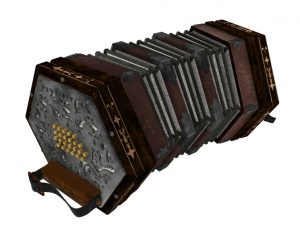
You are most likely thinking about the concertina. The concertina is not considered a “true” traditional accordion but it has so many familiar details and characteristics that it is generally classified as a type of accordion.
So it’s fair to say they are accepted as accordions.
Their small size means they’re great for travelling around with and are also instruments that small children can learn to play easily. When I was a child, I had a toy concertina which annoyed my parents very much!
The concertina is by far the smallest accordion you can buy and they are not just considered a novelty instrument, they are played professionally and some are really beautifully crafted.
Apart from being known as the smallest accordion, concertinas are also often associated with sailors who historically used to take them on their travels, this leads back to the advantages of the concertina being so small.
Concertinas are more popular in Europe and the variant name of concertinas available reflect their origin, (English, Anglo, German and Duet).
What’s the Best Way to Learn to Play the Accordion for Beginners?

At first glance, the accordion with all of its buttons can look daunting or complex. But don’t let this put you off.
Like learning any instrument, when it comes to learning how to play the accordion it’s going to take practice.
Learning the accordion isn’t too hard at all. In my experience, I have seen many can get comfortable playing the accordion from beginner level within about 2 to 4 months if maintaining a consistent practice of AT LEAST 15-mins every day 5 times a week.
The most tricky part of learning how to play the accordion is getting the hang of making each hand work independently, but most people overcome this hurdle with time.
There is a range of methods one can use to learn to play the accordion. Some use books, some use face-to-face courses, and some turn to YouTube.
In my experience, face-to-face is by far the best way to learn an instrument, however, the drawback to this is that lesson time can become expensive.
The next best thing to being face-to-face with a teacher is to find a good online course.
I always recommend Accordion courses on Udemy as many of their courses are of good quality and depth and many times you can reach out to the teachers if you need them to further clarify or explain something.
Another place I can recommend really highly is Lessonface, The unique thing about Lessonface over Udemy is that Lessonface has more of a community feel to it.
Lessonface puts you into contact with independent teachers from all around the world and allows you to book reasonably priced lessons with them.
Some tutors on Lessonface.com also offer group lessons too which can be really fun. All courses are done online and they do offer free 15-minute trial sessions with any tutor to see if you like their way of teaching. Win-win.
What are the top accordion brands recommended for new learners?
I recommend starting with trustworthy brands like Hohner, Roland, and Excalibur. These brands offer reliable quality and consistent performance, which are essential when you’re just starting out.
Should a novice opt for a button accordion or a piano-style one?
If you’re familiar with the piano keyboard, a piano-style accordion might be more intuitive. Button accordions can be less daunting in terms of size and are known for their use in traditional and folk music.
What are the characteristics of a good beginner accordion?
A good beginner accordion should be lightweight, have a manageable size, and produce a clear, balanced sound. Look for one with adjustable straps and a comfortable keyboard reach.
Can I teach myself how to play the accordion, and if so, how?
Yes, you can teach yourself to play the accordion. Begin with a simple, beginner-friendly method book, follow online tutorials, and practice regularly to build your skills.
What is the most suitable type of accordion for playing polka as a beginner?
For playing polka, a diatonic button accordion is often suitable. It’s tailor-made for the bouncy rhythm and melodic structure commonly found in polka music.
Are there affordable accordions suitable for adult beginners?
Absolutely. Brands like Hohner and Roland and the models recommended above offer entry-level models that are both affordable and of good quality.
Many music stores also provide rent-to-own programs that can ease the financial burden for adult beginners.
Author Profile
-
Daniel Johnstone is an English writer with a love for stringed instruments from around the world.
He shares his love for these instruments through his writing for folkstrings.com, a website dedicated to all things related to folk string music.
Daniel's passion for music started at a young age, and he has since become an accomplished musician, playing guitar, cavaco, and recently, the harp.
His dedication to learning and sharing his knowledge of stringed instruments is evident in his insightful and engaging blog posts. Whether you're a seasoned musician or a beginner, Daniel's writing is sure to inspire and entertain you.
When he's not playing music or writing, you can find Daniel exploring new instruments and seeking out new sounds to share with his readers.
Latest entries
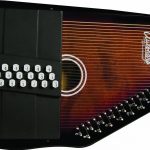 AutoharpApril 4, 2024What Is the Autoharp Made Of: Exploring Its Materials and Craftsmanship
AutoharpApril 4, 2024What Is the Autoharp Made Of: Exploring Its Materials and Craftsmanship AutoharpApril 4, 2024Is Autoharp Easy to Play? Unveiling the Truth for Beginners
AutoharpApril 4, 2024Is Autoharp Easy to Play? Unveiling the Truth for Beginners AutoharpApril 4, 2024What Is an Autoharp Worth? Your Guide to Pricing and Value
AutoharpApril 4, 2024What Is an Autoharp Worth? Your Guide to Pricing and Value AutoharpApril 4, 2024Are Autoharp and Zither the Same Thing? Unraveling String Instrument Myths
AutoharpApril 4, 2024Are Autoharp and Zither the Same Thing? Unraveling String Instrument Myths
Affiliates:
This post may contain affiliate links that at no additional cost to you, the site may earn a small commission. We only recommend products we would use ourselves and all opinions expressed on this site are our own.
Accuracy Advice:
While we strive to provide up-to-date and accurate information, the content in this article may not reflect the most current research or medical guidelines. We encourage readers to do further research and consult with professionals for more personalized advice.
Our Recommendations:
The products and services mentioned in any of our articles are recommended based on our independent research and personal experience. We are not sponsored by any company. We aim to suggest products and services we believe are of high quality and could be beneficial to our readers.

